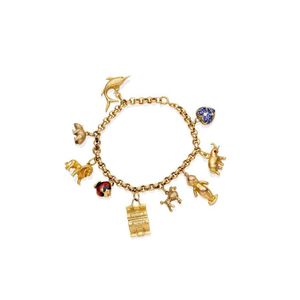Victorian Gold Ring with Three Seals
You must be a subscriber, and be logged in to view price and dealer details.
Subscribe Now to view actual auction price for this item
When you subscribe, you have the option of setting the currency in which to display prices to $Au, $US, $NZ or Stg.
- Carnelian Glass - Carnelian glass is a type of glass that is colored red, orange, or brownish-red. It is made by adding iron oxide to the glass mixture. The color of carnelian glass can vary depending on the amount of iron oxide that is added, as well as the firing temperature. Carnelian glass is often used to make beads, jewellery, and other decorative items. It can also be used to make stained glass windows and other art objects. Carnelian glass is sometimes called "carnelian chalcedony" or "carnelian quartz."
Carnelian glass was first made in the Roman Empire. It was also made in ancient Egypt, Greece, and Mesopotamia. Carnelian glass was not made again until the Renaissance, when it became popular again. Today, carnelian glass is made in many countries around the world. - Embossed / Repousse - Embossing, also known as repousse, is the technique of decorating metal with raised designs, by pressing or beating out the design from the reverse side of the object.It is the opposite of chasing, where the decoration is applied from the front. An embossed or repoussed object may have chasing applied to finish off the design.
- Victorian Period - The Victorian period of furniture and decorative arts design covers the reign of Queen Victoria from 1837 to 1901. There was not one dominant style of furniture in the Victorian period. Designers used and modified many historical styles such as Gothic, Tudor, Elizabethan, English Rococo, Neoclassical and others, although use of some styles, such as English Rococo and Gothic tended to dominate the furniture manufacture of the period.
The Victorian period was preceded by the Regency and William IV periods, and followed by the Edwardian period, named for Edward VII (1841 ? 1910) who was King of the United Kingdom and the British Dominions and Emperor of India for the brief period from 1901 until his death in 1910.
This item has been included into following indexes:
Visually similar items

A gold charm bracelet, the belcher link bracelet hung with nine assorted charms. 18ct, 22ct and 9ct yellow gold. Weight 34.91 grams. Length 20 cm.

A pair of diamond heart shaped drop earrings, seventy grain and bezel set round brilliant cut diamonds of estimated total weight 1.05 carats, in a double drop heart motif. 9ct rose gold. 7.1 grams. Length 3.5 cm.

A lady's diamond wristwatch, Hamilton. Manual. Oval case with cream dial and applied silver baton numerals, diamond set bezel, lugs and bracelet. Dial, crown and 17 jewel movement signed. 14ct white gold. Weight 25.20 grams

Three antique 9ct gold Itmes; late 19th century bar brooch set with a red stone and seed pearls marked H&N, key brooch marked Apex and ring set with pearl and white stones, wt 10.8g
